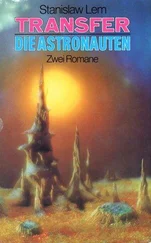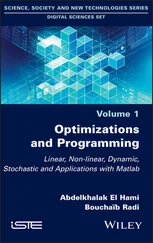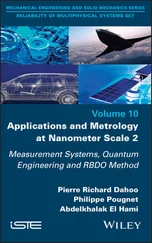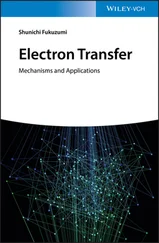1 Cover
2 Title Page Mathematical and Mechanical Engineering Set coordinated by Abdelkhalak El Hami Volume 10
3 Copyright First published 2021 in Great Britain and the United States by ISTE Ltd and John Wiley & Sons, Inc. Apart from any fair dealing for the purposes of research or private study, or criticism or review, as permitted under the Copyright, Designs and Patents Act 1988, this publication may only be reproduced, stored or transmitted, in any form or by any means, with the prior permission in writing of the publishers, or in the case of reprographic reproduction in accordance with the terms and licenses issued by the CLA. Enquiries concerning reproduction outside these terms should be sent to the publishers at the undermentioned address: ISTE Ltd 27-37 St George’s Road London SW19 4EU UK www.iste.co.uk John Wiley & Sons, Inc. 111 River Street Hoboken, NJ 07030 USA www.wiley.com © ISTE Ltd 2021 The rights of Michel Ledoux and Abdelkhalak El Hami to be identified as the authors of this work have been asserted by them in accordance with the Copyright, Designs and Patents Act 1988. Library of Congress Control Number: 2020949611 British Library Cataloguing-in-Publication Data A CIP record for this book is available from the British Library ISBN 978-1-78630-517-6
4 Preface
5 Introduction
I.1. Preamble I.2. Introduction I.2. Introduction Thermal science is to thermodynamics as decree means is to law. It answers the following question – which all good leaders must (or should) ask themselves whenever they have an “idea”: “How would this work in practice?”. In a way, thermal science “implements” thermodynamics, of which it is a branch. A thermodynamics specialist is a kind of energy economist. Applying the first principle, they create a “grocery store”. With the second principle, they talk about the quality of their products. I add or remove heat from a source or work from a system. And the temperature, among other things, defines the quality of the energy for me. But by what means do I take or do I give ? Even calculations of elementary reversible transformations do not tell us by what process heat passes from a source to a system. Thermal science specifies how, but “evacuates” the work. If in a given problem related to, for example, a convector where electrical energy (therefore in the “work” category) appears, it is immediately dissipated into heat by the Joule effect. Three heat transfer modes can be identified: conduction and radiation – which can be seen separately, although they are often paired up – and convection, which is by nature an interaction of fluid mechanics and conduction. Dividing the study of thermal science into three volumes is the result of logic. Presenting this work in three volumes is somewhat arbitrary; in our opinion, however, this split was necessary in order to keep the volumes in the collection a reasonable size. The first volume, entitled Heat Transfer 1 , is dedicated to “classic” approaches (analytical treatment) to conduction, which will be of greater interest to readers who are looking for “simple” prediction methods. The second volume, entitled Heat Transfer 2 , is dedicated to “classic” approaches (analytical treatment) of radiation, and assembles digital approaches of these various transfer modes. It is aimed at engineers or researchers who want to resolve more complex problems. The third volume, entitled Heat Transfer 3 , is focused on convection transfers. As we have already pointed out, all of these transport operations are rarely pure and lead to problems that involve three inter-connecting transfer modes, conduction, convection and radiation. Before our readers immerse themselves in a text that, despite our best efforts, remains intellectually demanding, we propose a short text that is a little lighter .
I.3. Interlude
6 1 General Remarks1.1. Introduction 1.2. Propagation of a sinusoidal electromagnetic wave 1.3. The concept of photometry
7 2 Calculating Luminances2.1. Introduction 2.2. The black body: concept, luminance, Planck’s law and approximations 2.3. Stefan–Boltzmann law 2.4. Wien’s laws 2.5. Fraction of the total emittance of a black body radiated in a spectral band 2.6. Emissivity of any body: a general case of a non-black body 2.7. Simple applications
8 3 Emission and Absorption3.1. Introduction 3.2. Absorption, reflection, transmission 3.3. Kirchhoff’s law 3.4. Recap on the global absorption coefficient 3.5. General case: multiple transfers 3.6. Absorption: the Beer–Lambert law
9 4 Radiation Exchanges Between Surfaces4.1. Introduction 4.2. Classification 4.3. The case of total influence
10 5 Analytic Applications5.1. Introduction 5.2. Radiators, convectors and radiating fins 5.3. Radiation and oven 5.4. Radiation and metrology 5.5. General problems
11 6 Modeling and Simulations under ANSYS6.1. Conduction, convection and radiation 6.2. Conduction and convection using ANSYS software 6.3. Radiation using ANSYS software 6.4. Examples of modeling and analysis with ANSYS 6.5. Study of a thermal exchanger on ANSYS 6.6. Conclusion
12 Appendix: G0−λT Function Table
13 References
14 Index
15 End User License Agreement
1 Chapter 4Table 4.1. Comparison of (1 + ε) nand of its approximate expression 1 + nε
2 Chapter 6Table 6.1. Parameters and associated valuesTable 6.2. Thermo-physical properties of hydrated saltTable 6.3. Thermo-physical properties of paraffin
1 Chapter 1 Figure 1.1. Concept of the solid angle. For a color version of this figure, see ... Figure 1.2. Illustration of  . For a color version of this figure, see www.iste.... Figure 1.3. The angle θ, For a color version of this figure, see www.iste.co.uk/...
. For a color version of this figure, see www.iste.... Figure 1.3. The angle θ, For a color version of this figure, see www.iste.co.uk/...
2 Chapter 2Figure 2.1. General appearance of the luminance  of the black body, at some tem...Figure 2.2. Comparison of the exact luminance
of the black body, at some tem...Figure 2.2. Comparison of the exact luminance  of the body with both approximat...Figure 2.3. Luminances compared for the Sun and the Earth, considered as a black...Figure 2.4. Principle of radiative forcing. For a color version of this figure, ...
of the body with both approximat...Figure 2.3. Luminances compared for the Sun and the Earth, considered as a black...Figure 2.4. Principle of radiative forcing. For a color version of this figure, ...
3 Chapter 3Figure 3.1. Schematic of radiative exchanges at a surface. For a color version o...
4 Chapter 4Figure 4.1. Example of radiation between multiple surfacesFigure 4.2. The two plate models
5 Chapter 5Figure 5.1. Emissivity from the plate. For a color version of this figure, see w...Figure 5.2. Influence of the emissivity on the emittance from the plate. For a c...Figure 5.3. Real emittance from the plate according to the wavelength. The maxim...Figure 5.4. Device for measuring thermal conductibility. First time: no error so...Figure 5.5. Device for measuring thermal conductibility a second time. An initia...Figure 5.6. Device for measuring thermal conductibility. Third time: a second so...Figure 5.7. Fahrenheit 451, IFigure 5.8. Fahrenheit 451, II
6 Chapter 6Figure 6.1. Schematic of conduction in a tubeFigure 6.2. Three types of thermal transfer summarized using a casseroleFigure 6.3. Procedure to use with ANSYSFigure 6.4. Study model with different boundary conditionsFigure 6.5. Model, built and meshedFigure 6.6. Model under boundary conditionsFigure 6.7. Result from the model showing the effect of simple conductionFigure 6.8. shows our model in ANSYS, meshed and fully defined.
Читать дальше
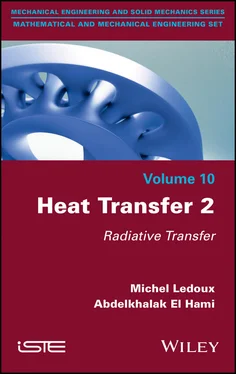
 . For a color version of this figure, see www.iste.... Figure 1.3. The angle θ, For a color version of this figure, see www.iste.co.uk/...
. For a color version of this figure, see www.iste.... Figure 1.3. The angle θ, For a color version of this figure, see www.iste.co.uk/... of the black body, at some tem...Figure 2.2. Comparison of the exact luminance
of the black body, at some tem...Figure 2.2. Comparison of the exact luminance  of the body with both approximat...Figure 2.3. Luminances compared for the Sun and the Earth, considered as a black...Figure 2.4. Principle of radiative forcing. For a color version of this figure, ...
of the body with both approximat...Figure 2.3. Luminances compared for the Sun and the Earth, considered as a black...Figure 2.4. Principle of radiative forcing. For a color version of this figure, ...



